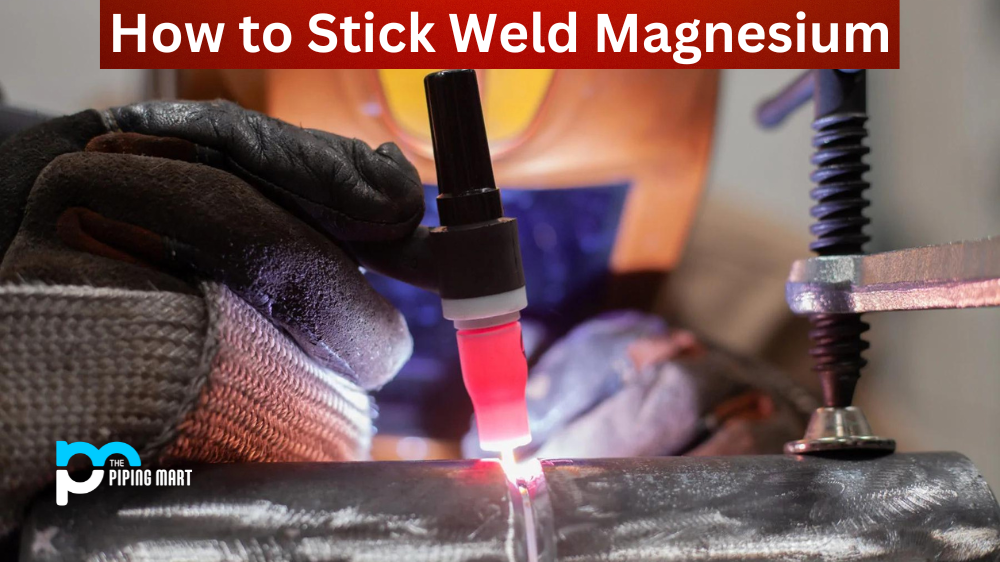Magnesium is a lightweight metal that can be used to create a variety of parts. When welding magnesium, the best practice is to use stick welding, also known as shielded metal arc welding (SMAW). This process involves using an electric current to heat a piece of metal with an electrode. Stick welding magnesium requires special considerations in order to ensure the job is done correctly and safely.
Process Overview
Stick welding magnesium involves five main steps: cleaning, tack-welding, back-step welding, peening, and post-weld cleaning. First, the surfaces should be cleaned to remove any dirt or debris that might interfere with the weld. Then tack-welds should be made at each end of the joint before beginning the back-step welding process. Back-step welding is where the electrode is moved from one side of the joint to the other to create a uniform weld bead. Once this step is complete, you should use a peen hammer to flatten out any bumps or ridges created by the weld bead; this will help improve its strength and durability. Finally, finish up with some post-weld cleaning by brushing away any slag or residue left behind on your work piece.
Safety Precautions
Safety must always be a top priority when working with metals like magnesium. Magnesium emits an intense light when heated, which can cause eye damage if proper precautions are not taken; always wear protective goggles when sticking welding magnesium! Additionally, you need to make sure your workspace is well-ventilated, so you don’t inhale dangerous fumes generated by burning magnesium. Finally, keep all flammable items away from where you are working; sparks generated by stick welding can easily ignite combustible materials!
Tools Needed
Stick welding magnesium requires some specialized tools in addition to essential stick equipment such as electrodes and holders for them. You will need a special type of flux core wire known as EZ33A because it does not contain sodium chloride, which would corrode your work piece over time. You may also want to invest in an amperage meter to control how much current flows through your work piece during the welding process; too much current could burn through your material! Lastly, consider purchasing special gloves designed for handling hot metals, as they will provide extra protection for your hands while working on your project.
Conclusion:
Sticking Welding Magnesium should not be taken lightly—it takes practice and experience to get it right! That being said, taking all necessary safety precautions and investing in specialized tools can make sticking welding magnesium easier and more enjoyable overall. With enough patience and dedication, anyone can become proficient at sticking welds on magnesium projects! So why wait? Get started today and see what kind of amazing things you can create!

Abhishek is a seasoned blogger and industry expert, sharing his insights and knowledge on various topics. With his research, Abhishek offers valuable insights and tips for professionals and enthusiasts. Follow him for expert advice on the latest trends and developments in the metal industry.




